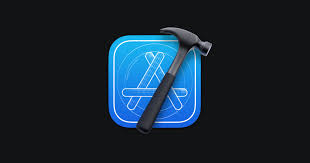iOS development offers developers the opportunity to create powerful and elegant apps for one of the most popular mobile platforms in the world. With millions of iPhone and iPad users worldwide, iOS development is an exciting field with vast potential for growth. In this article, we’ll explore the basics of iOS development, the tools required, and best practices for building robust apps using Swift and Xcode.
What is iOS Development?
iOS development refers to the process of creating applications for Apple devices such as iPhone, iPad, and iPod Touch. iOS developers use Swift or Objective-C to write apps, and Xcode, Apple’s official Integrated Development Environment (IDE), to build and manage the development process. The Apple ecosystem is known for its high-quality design and performance, making it essential for developers to create apps that meet strict guidelines for quality and user experience.
Essential Tools for iOS Development
To start building iOS apps, you need to set up a development environment that includes several essential tools. Here’s what you’ll need:
Xcode

Xcode is Apple’s official IDE for macOS, designed specifically for iOS, macOS, watchOS, and tvOS app development. Xcode provides everything you need to create, build, test, and submit your app to the App Store. It features a powerful code editor, Interface Builder for designing UIs, simulators for testing apps on different devices, and debugging tools to help identify and resolve issues.
Swift

Swift is a modern, fast, and safe programming language developed by Apple. It is the preferred language for iOS development, offering concise syntax and features like type safety and automatic memory management. Swift is easy to learn for beginners and powerful enough to handle complex tasks, making it ideal for iOS apps.
Setting Up Your iOS Development Environment
Before you can start building your first iOS app, you’ll need to set up your development environment. Follow these steps to get started:
1. Download and Install Xcode
You can download Xcode for free from the Mac App Store. Once installed, Xcode provides access to all the tools you need, including the Swift compiler, Interface Builder, and testing simulators. Make sure to update Xcode regularly to keep up with the latest iOS SDK versions and features.
2. Enroll in the Apple Developer Program
While Xcode allows you to build and test apps on a simulator for free, if you want to publish your app on the App Store or test it on a physical device, you’ll need to enroll in the Apple Developer Program. This program provides access to App Store submission, beta testing tools, and advanced app analytics for a yearly fee.
3. Set Up a Testing Device
Testing your app on real devices is crucial for ensuring that your app works well on actual hardware. Connect your iPhone or iPad to your Mac and set it up as a testing device in Xcode. You can run and debug your app directly on the device, allowing you to test performance, UI responsiveness, and user interactions.
Building Your First iOS App
Once your development environment is ready, it’s time to build your first iOS app. Here’s a quick overview of the steps involved:
1. Create a New Project in Xcode
Open Xcode and create a new project by selecting the “iOS App” template. Set the app’s name, identifier, and language (Swift is recommended). Xcode will automatically generate the basic structure of the app, including the project files and directories needed for development.
2. Design the User Interface
Xcode’s Interface Builder allows you to design your app’s UI visually. You can drag and drop UI elements like buttons, labels, and text fields into your app’s view controllers. Interface Builder makes it easy to create responsive layouts using Auto Layout, which adjusts the UI for different screen sizes and orientations.
3. Write the Code in Swift
Once your UI is set up, it’s time to add functionality by writing Swift code. Swift makes it simple to handle user interactions, manage data, and update the UI. Use view controllers to connect your UI elements to your code, and implement logic to control how the app behaves when users interact with it.
Best Practices for iOS Development
As you progress in iOS development, following best practices will help you write clean, maintainable, and efficient code. Here are a few essential tips:
Follow the Model-View-Controller (MVC) Pattern
MVC is the standard design pattern for iOS development. It separates your app’s data (Model), user interface (View), and business logic (Controller) into different components. This makes your code more organized and easier to maintain, especially as your app grows in complexity.
Optimize for Performance
iOS users expect apps to be fast and responsive. To ensure optimal performance, minimize memory usage, optimize images and assets, and avoid blocking the main thread. Xcode provides performance analysis tools, such as Instruments, to help you detect performance bottlenecks and optimize your app accordingly.
Conclusion
iOS development is a rewarding and challenging field with vast opportunities for creativity and innovation. By learning Swift, mastering Xcode, and following best practices, you can build high-quality apps that provide seamless experiences for iPhone and iPad users. Whether you’re a beginner or an experienced developer, the iOS platform offers a wealth of resources and tools to help you succeed.


